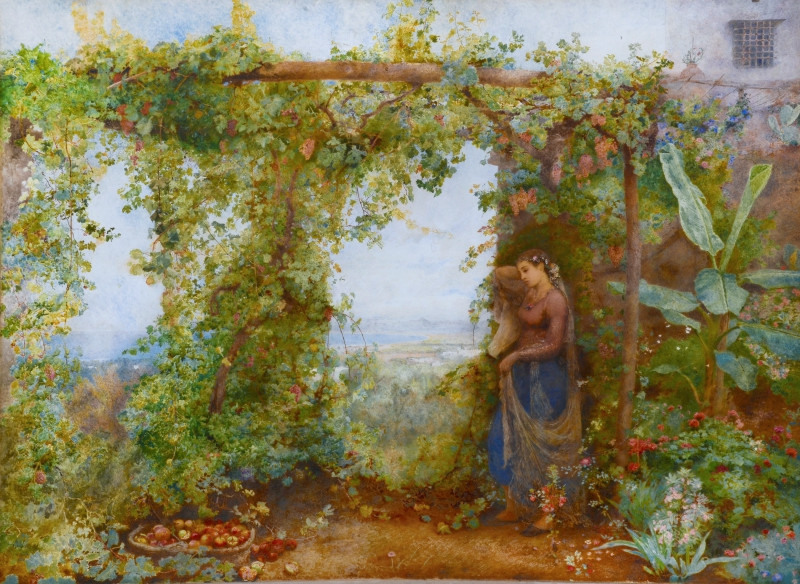
(click image to enlarge)
In the winter of 1873, J W North joined his friend and fellow artist, Fred Walker, on a trip to Algiers. Walker hoped that the warm North African climate would counter the effects of his inherited tuberculosis, and that the landscape might provide him with inspiration for his painting in progress, The Unknown Land. And, on their arrival on Christmas Day, the friends shared ‘in ecstasies over the flowers and fruitful greenness of the land’ (Herbert Alexander, ‘John William North’, Old Water-Colour Society’s Club, vol 5, 1927-28). However, by late February 1874, Walker felt no better and had become homesick. So he left North and returned home in the company of the amateur artists, Barbara Bodichon and Gertrude Jekyll, who had also been wintering in Algiers. He would die on 4 June 1875, with The Unknown Land unfinished.
When Walker left, North stayed on in Mustapha Superieur, a beautiful suburb of Algiers frequented by English and French visitors. Buying a piece of land from his neighbour, Ali Cherif, he built himself a house called ‘Dar el Ouard’ or ‘House of the Roses’, and lived there for several months a year over the next six years. He sold it on his marriage in 1890, though retained a piece of land in Algiers for another five years in the vain hope of building another property. Dar el Ouard is now the residence of the Turkish Ambassador to Algiers.
North produced a number of oils and watercolours on Algerian themes in the period between 1874 and 1880. So in 1880, he exhibited not only Under an African Vine, Algiers at the Society of Painters in Water Colours but also two oils, The Grass of the Field and Algerine Afternoon, at the Grosvenor Gallery. Under an African Vine, Algiers almost certainly shows the pergola at the southern end of Dar el Ouard, with a view of the Bay of Algiers in the background. The meticulous depiction of the abundant and exotic vegetation – not to mention the languorous young woman – strongly suggests the attraction that Algeria offered the artist.